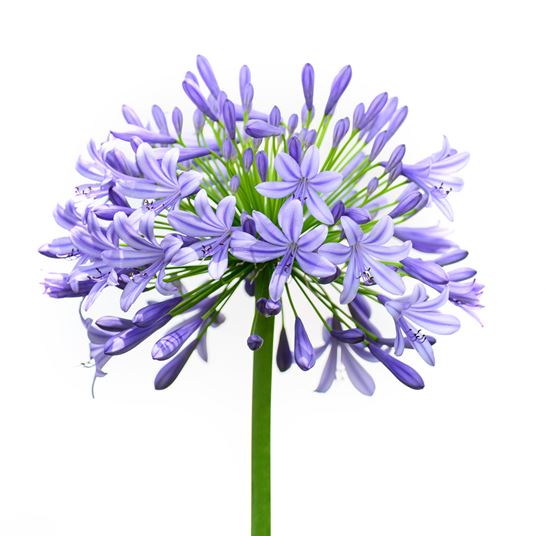Mastering the Art of Agapanthus Treatment: Essential Steps for Healthy And Balanced Development and Vivid Blossoms
In the world of horticulture, the farming of agapanthus stands as a rewarding venture for those that look for to nurture these elegant flowering plants. From selecting the best selection to grasping pruning techniques, the journey in the direction of cultivating growing agapanthus plants is diverse and holds the key to unlocking the complete possibility of these herb treasures.

Selecting the Right Agapanthus Range

When choosing the appropriate Agapanthus range for your yard, consider variables such as climate suitability, blossom color, and growth habit. Agapanthus, commonly recognized as Lily of the Nile or African lily, is available in a selection of shades ranging from tones of blue and purple to white. Choose a blossom shade that complements your existing garden scheme to create a harmonious landscape. Additionally, consider the environment in your region to make sure the Agapanthus selection you pick can flourish in your particular conditions. Some ranges are extra tolerant of chilly temperatures, while others choose warmer climates. Understanding the development practice of various Agapanthus varieties is essential for correct placement within your garden. Some varieties have a clumping development behavior, suitable for boundaries or containers, while others have a more spreading nature, suitable for ground cover or mass growings. By carefully evaluating these factors, you can pick the ideal Agapanthus range to enhance the charm of your yard.
Ideal Growing Conditions
Considering the optimal ecological requirements is vital for effective Agapanthus growing. Agapanthus plants are delicate to chilly temperature levels and need to be secured from frost during wintertime months.
To make certain healthy growth and vibrant blooms, plant Agapanthus bulbs at a depth of regarding 2-4 inches and space them 8-12 inches apart. Mulching around the base of the plants helps retain wetness and reduces weed growth.
Watering and Feeding Tips
Maintaining appropriate wetness degrees and offering essential nutrients are vital aspects in the treatment regimen for Agapanthus plants. When it comes to watering Agapanthus, it is crucial to strike an equilibrium. These plants prefer constantly wet soil but are vulnerable to root rot if overwatered.
Feeding Agapanthus is important for advertising healthy and balanced growth and prolific blooms. Apply a balanced plant food, such as a 10-10-10 formula, in the early spring as new like it development emerges. Repeat this application every 6-8 weeks throughout the growing period. Stay clear of too much fertilizing, as it can result in rich foliage at the cost of flowers. Constantly follow the supplier's guidelines for proper dilution and application methods. By complying with these watering and fertilizing pointers, you can ensure your Agapanthus plants prosper and create lively, long-lasting blooms.
Pruning Strategies for Agapanthus
Pruning Agapanthus plants at the proper times and with proper methods is important for preserving their wellness and advertising optimum development and flowering. The excellent time to trim Agapanthus is in late winter season or early springtime before brand-new growth important site emerges.
Deadheading spent blossoms can also redirect the plant's energy right into producing even more flowers rather than establishing seeds. If you want to gather seeds for propagation, leave some blossoms to completely dry and mature on the plant.
Bear in mind to make use of tidy, sharp tools to make specific cuts and minimize the risk of presenting illness. Agapanthus. Regular trimming will assist maintain your Agapanthus looking healthy and balanced and cool while guaranteeing an abundant display screen of stunning blooms
Managing Typical Insects and Conditions
After ensuring correct pruning look what i found techniques for Agapanthus, it is necessary to attend to usual parasites and diseases that can impact the wellness and vitality of these plants. One typical pest that impacts Agapanthus is the Agapanthus gall midge.
Additionally, Agapanthus plants can experience from root rot if they are planted in improperly draining soil. By being alert and taking prompt activity against diseases and parasites, you can help your Agapanthus plants prosper and produce vibrant flowers. Agapanthus.

Conclusion
Finally, grasping the art of agapanthus care includes choosing the best variety, supplying ideal planting problems, proper watering and feeding, proper trimming methods, and resolving common parasites and conditions. By complying with these essential actions, you can make sure healthy and balanced growth and vibrant blooms for your agapanthus plants. Remember to frequently check and preserve your plants to promote their general wellness and longevity.
To guarantee healthy and balanced development and vibrant blooms, plant Agapanthus light bulbs at a deepness of about 2-4 inches and room them 8-12 inches apart. By adhering to these watering and feeding tips, you can ensure your Agapanthus plants flourish and produce vivid, long-lasting blooms.
One typical bug that impacts Agapanthus is the Agapanthus gall midget. Furthermore, Agapanthus plants can endure from root rot if they are planted in inadequately draining pipes soil. By complying with these vital steps, you can make sure healthy growth and lively blossoms for your agapanthus plants.